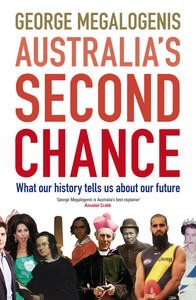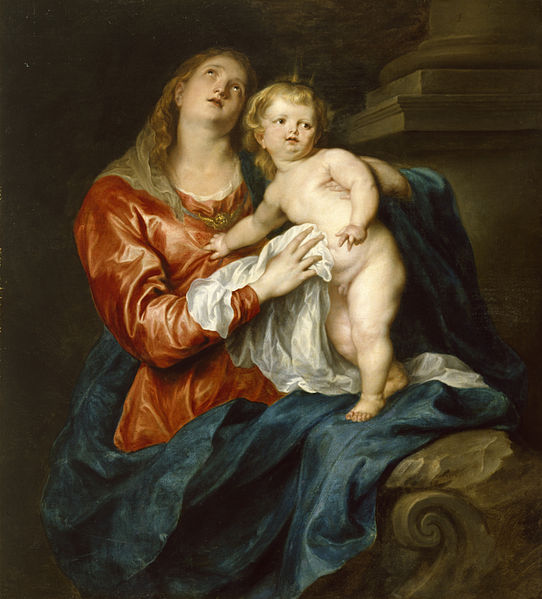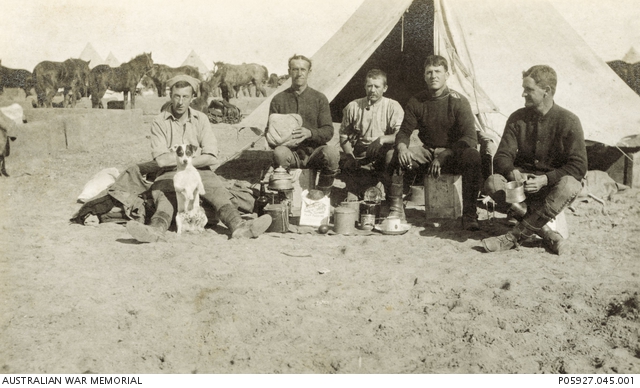‘Honest History Christmas miscellany 2015: lots to read and ponder’, Honest History, 20 December 2015
Christmas often brings a reckoning and it is the same in our compact little enterprise. We would have loved to have afforded some of the items below a proper going over (or even just a review) but time has caught up with the HH elves and we will instead give these books and articles just a quick mention.
We finish off with an item from the press of a century ago, on a day when Australians were still unaware of the successful evacuation from Gallipoli then underway. The news of that came a couple of days into the following week. (Minister Robert’s media release marks the spot.)
ASIO blockbuster volume 2; immigration driving our history
Under this heading, there is John Blaxland’s The Protest Years: The Official History of ASIO, 1963-1975 which is what it says. It is extracted in the Canberra Times, talked about by the author with Michelle Grattan (The Conversation) and Fran Kelly (ABC RN) and considered by Paul Daley (Guardian Australia) and Brian Toohey. (Paul Daley is one of Honest History’s distinguished supporters.) Ernst Willheim wrote about ASIO volume 1 by David Horner.
 Not nearly as thick as the Blaxland book but just as provocative in its own way is George Megalogenis’s Australia’s Second Chance. It appeals because it downplays war and upgrades immigration among the drivers of our national story. Megalogenis believes the Anzac legend plays to ‘preferred narratives of Australian victimhood and stoicism’ and that World War I entrenched conflict in Australian society, leading in turn to poor economic performance and parochialism. He traces how over two centuries we have done better when we have welcomed newcomers. There is perhaps a risk that Megalogenis substitutes a single driving factor for a single foundation myth but the book is a great read nevertheless. (Megalogenis summarises his argument in The Monthly.)
Not nearly as thick as the Blaxland book but just as provocative in its own way is George Megalogenis’s Australia’s Second Chance. It appeals because it downplays war and upgrades immigration among the drivers of our national story. Megalogenis believes the Anzac legend plays to ‘preferred narratives of Australian victimhood and stoicism’ and that World War I entrenched conflict in Australian society, leading in turn to poor economic performance and parochialism. He traces how over two centuries we have done better when we have welcomed newcomers. There is perhaps a risk that Megalogenis substitutes a single driving factor for a single foundation myth but the book is a great read nevertheless. (Megalogenis summarises his argument in The Monthly.)
Crusty old blokes performing
Appearing no doubt under many Christmas trees will be Kerry O’Brien’s take on Paul Keating, reviewed (The Conversation) here by Natalie Mast, whose expertise is in performance analytics, which is interesting in itself, and here (Fairfax) by Guy Rundle. Rundle describes the book as ‘a fantastically readable account of and by a man who made us as we are and will be’ – over-egging it rather, as is Rundle’s wont. Keating’s post-prime ministerial speeches, published as After Words, are well worth a read also. After After Words, there was Keating’s speech at the twentieth anniversary (2013) of the interment of the Unknown Australian Soldier. Honest History’s interpretation of that speech differed from most, concluding that ‘Keating is as ambivalent about Anzac and our war tradition as many of the rest of us are’.
Christmas brings on nostalgia and a manageable dose of it comes in Sylvia Lawson’s reminiscence in Inside Story about one of the best Australian movies, Newsfront (1978, before it’s star, Bill Hunter, degenerated into a mumbling caricature). Along the way, Lawson compares Newsfront with other notable Australian flicks: Picnic at Hanging Rock, Mad Max – Fury Road, The Dressmaker – thumbs down for all three; Last Cab to Darwin – massive thumbs up, ‘wonderful work’ by Michael Caton. ‘If there’s a grandchild of Newsfront in its grip on Australian realities, we have it here.’
Virgins and myths
Riffing off Christmas is a piece in The Conversation by classicist Marguerite Johnson on virgin birth and miracle babies. It provoked 74 comments, which is a medium-size reaction for this online journal. Virgin birth and similar yarns, Johnson says, ‘remind us to consider the miracle of Christmas within the context of antiquity, particularly the ancient recourse to storytelling to express unfathomable concepts’. They
may be interpreted as attempts to communicate a beautiful mystery to an ancient people. Whether such accounts continue to fortify the faith of modern peoples or provide the answers some seek is open to debate.
 Virgin and child, Anthony Van Dyck, c. 1630 (Wikimedia Commons/Walters Art Museum)
Virgin and child, Anthony Van Dyck, c. 1630 (Wikimedia Commons/Walters Art Museum)
Riffing in turn, we can draw some parallels with other myths that deal with ‘unfathomable concepts’. If, intellectually, an individual cannot come at virgin birth does this prevent them being a committed Christian? Similarly, if, as we get older, we realise that Santa Claus ain’t for real does that preclude us from enjoying good feelings and fellowship at Christmas? (Muslims, Jews and Buddhists please substitute appropriate myths and feelings.) When people accepted evidence that the Earth was not flat did they feel more or less sure that they would fall off the planet or did the new knowledge not affect their faith (or even their daily lives) much at all? Finally, if we conclude on the basis of evidence (or lack of it) that the stories of, say, Simpson and his Donkey and the alleged ‘Ataturk words’ of 1934 (‘Those heroes that shed their blood …’) are mostly myth does that prevent us having a respectful attitude to death in war and the impacts of war?
On that last point, if otherwise evidence-respecting historians conclude that ‘it doesn’t matter’ that nice stories like Simpson and Ataturk don’t stack up (and it is OK for us to go along with these stories) what does that do to their reputations as historians? Can they be both myth promoters and historians and, if the answer to that question is ‘Yes’, do they know when they are being one or the other? As a parting question, if I peddle a myth that lacks evidence what’s to stop me gussying it up a bit with some more myth? The historian’s need for evidence can sometimes be a nuisance but it is a discipline.
History, honesty and hope
That leads us to a wide-ranging musing by Tim Tyson, American historian of the Civil Rights Movement, in The Atlantic (18 December 2015). Tyson asks ‘Can honest history allow for hope?’ (our emphasis) so, of course, his article leapt out of our daily Google for mentions of our signature phrase. Tyson is particularly good on the pitfalls of leaving the warts out of history.
To tell the sunnier story is a slide toward futility and perhaps a kind of insanity, a march into a circus mirror … Forcing the happy story means embracing delusions about who Americans have been, which inevitably lead to delusions about who Americans are. You may as well lie to your psychiatrist. “An invented past can never be used,” James Baldwin writes, “it cracks and crumbles under the pressures of life like clay in a season of drought.”
Yep. Tyson also quotes Milan Kundera: ‘The struggle of humanity against power … is the struggle of memory against forgetting’. Again, yep – for the most part.
Tyson is perhaps a bit pessimistic about whether advocacy and the practice of history can co-exist – the Honest History project is based on the idea that they can – but his is still a great article, as is another from The Atlantic this month (11 December) by Ta-Nehisi Coates. Coates says ‘writers who commit themselves to only writing hopeful things, are committing themselves to the ahistorical, to the mythical, to the hagiography of humanity itself’.
 Reading Room, State Library of NSW, Sydney, 1942 (Wikimedia Commons/SLNSW)
Reading Room, State Library of NSW, Sydney, 1942 (Wikimedia Commons/SLNSW)
Then, for those who try to beat the heat by propping in a public or university library there is the latest edition of the Journal of the Royal Australian Society (December 2015). Among others, Vicken Babkenian writes about Australian women who organised relief for Armenian victims of genocide during World War I, Susan West contributes on bushrangers in 1860s New South Wales and Michael Tyquin uncovers stories of Australian soldiers acting in a non-military fashion as part of the occupation force in German New Guinea after August 1914. (There is more on German New Guinea on the Honest History site.) If you join the RAHS, of course, you get access to the Journal.
Powers behind and on the throne
If administrative history is your Christmas read, then get onto The Seven Dwarfs and the Age of Mandarins, about post-war reconstruction, edited by Samuel Furphy and launched the other day by ANU Chancellor, Gareth Evans. The book is available free online or can be purchased in hard copy for $28. Authors include the late Geoffrey Bolton, Nicholas Brown, Peter Edwards, Stuart Macintyre, JR Nethercote and Tim Rowse. A book about blokes (Shedden, Wilson, Coombs, Crawford, Allen Brown, Wheeler, Hasluck, Burton, Tange, Plimsoll) and their work, written entirely by blokes.
The book of the 2010 conference has taken a while to get here but it complements Stuart Macintyre’s Australia’s Boldest Experiment and Graeme Powell’s (with Macintyre) Land of Opportunity, a guide to files in the National Archives relevant to post-war reconstruction. (Stuart Macintyre is one of Honest History’s distinguished supporters.)
Non-MSM high-octane policy commentary
Making waves online there is the Pearls and Irritations blog wrangled by former mandarin John Menadue. (John Menadue is one of Honest History’s distinguished supporters.) A bundle of the contributions to the site came out in November as a book, Fairness, Opportunity and Security, with many distinguished contributors. The Christmas offering on the site includes two articles on the Turnbull fiscal strategy by former mandarin Michael Keating, two articles on the NBN, an article on the innovation strategy by former mandarin David Charles, and articles on consumerism, charity, child sexual abuse, climate change, the Middle East, and rent-seeking.
A quote from Fairfax’s Ross Gittins stood out: he referred to four industries that ‘rule Australia – superannuation funds, miners, bankers and gambling industries’. (Cribbing from Ben Eltham on the recent innovation statement, Honest History’s list of ‘sectors which are not particularly innovative’ was banking, mining, rent-seeking and supermarkets.)
 Five men and dog, army camp, Egypt, Christmas Day, 1915 (AWM P05927.045.001/Roy Cadell Traill)
Five men and dog, army camp, Egypt, Christmas Day, 1915 (AWM P05927.045.001/Roy Cadell Traill)
Then and now
This reviewer was interested to see in Fairfax media a collection of writers recommending books for the holidays. The 150 or so volumes featuring were noticeable for the lack of war books. The reviewer has, however, almost finished reading Two Americans, by the late William Lee Miller, a disappointing final book about Truman and Eisenhower in war and after it by an author who wrote a couple of beauties on Abraham Lincoln. Almost finished also is Peter FitzSimons’ Fromelles and Pozieres. It contains some surprises. Review coming.
As for what people were reading at Christmas time a century ago, the Melbourne Punch of 16 December 1915 offered a list of ‘Christmas books for young and old’. There was a collection of nursery rhymes and one of fairy tales, Cassell’s Children’s Annual and Robertson’s Our Boys and Girls Magazine, The Gay Book (words have changed their meaning) and Flippity the Runaway (about a rabbit).
Before we get too superior though about the quaint reading habits of 1915, we should record that The War 1914-15 – a History and an Explanation for Boys and Girls by Elizabeth O’Neil offered to help children ‘easily comprehend the trend of the greatest war in history, and realise fully the gigantic issues at stake’. We don’t know how well the book lived up to these claims but war books for children today seem to have a narrower agenda.
As for adults, Mr Punch’s list came up a bit short. Perhaps, in an era pre-television and pre-computer games parents were destined to spend most of their Christmas break amusing their children with Flippity the rabbit and nursery rhymes. However, Punch did mention ‘that cream of Australian literature and art Melba’s Gift Book‘, which had coloured plates, poetry and prose, Here is Faery, which sounds much the same, and the December edition of the New Magazine, packed with stories by authors whose names have mostly faded from the canon a century on. On the same page, Lothian Publishing advertised volumes of poetry by Adam Lindsay Gordon, Henry Kendall, Henry Lawson, Bernard O’Dowd and some lesser names while Robertson & Mullens booksellers reminded the people of Melbourne that ‘there is a peculiar dignity attached to the gift of a book that is in no way affected by its Price’.
To that worthy (if somewhat ambivalent) sentiment there is nothing that one could possibly add. Having tracked all of the above, this reviewer will be trying to find time in the holidays to read Chloe Hooper’s The Tall Man, Francis Fukuyama’s Political Order and Political Decay, Richard Flanagan’s The Narrow Road to the Deep North and Gideon Haigh’s Certain Admissions. (Gideon Haigh is one of Honest History’s distinguished supporters.)
 Black Madonna, Wroclaw (Breslau), Poland (Wikimedia Commons/Pudelek/Marcin Szala). The then Breslau was part of Germany in 1945 with a population predominantly ethnic German. Around 40 000 civilians died in Breslau in the early months of 1945 as the Russian Red Army besieged the city, destroying about half of its buildings. This death toll roughly matches the number of Australian military personnel killed in the whole of World War II.
Black Madonna, Wroclaw (Breslau), Poland (Wikimedia Commons/Pudelek/Marcin Szala). The then Breslau was part of Germany in 1945 with a population predominantly ethnic German. Around 40 000 civilians died in Breslau in the early months of 1945 as the Russian Red Army besieged the city, destroying about half of its buildings. This death toll roughly matches the number of Australian military personnel killed in the whole of World War II.


Leave a Reply
You must be logged in to post a comment.